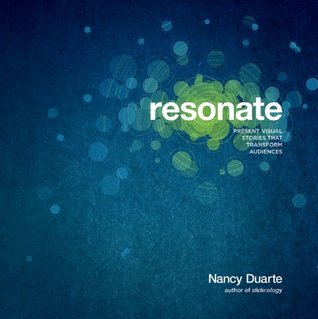More on this book
Community
Kindle Notes & Highlights
The audience does not need to tune themselves to you—you need to tune your message to them.
ideas stand out, they’ll be noticed. The enemy of persuasion is obscurity.
Nothing has intrinsic attention-grabbing power in itself. The power lies in how much something stands out from its context.
great way to stand out is to be real. Presentations tend to be stripped of all humanness—despite the fact that humans make up the entire audience!
the most human, transparent, and relational form of communication takes place when two people share common beliefs and create a connection based on beliefs.
It’s not the information itself that’s important but the emotional impact of that information.
If two products have the same features, the one that appeals to an emotional need will be chosen.
Make it about the audience.
Changing your stance from thinking you’re the hero to acknowledging your role as mentor will alter your viewpoint.
if a report primarily conveys information, then stories produce an experience.
One of the reasons presentations are dull is because there are no identifiable story patterns.
The change you’re requesting will not come without a struggle for your heroes—and you need to acknowledge that. Change is hard. Getting people to commit to change is probably an organization’s greatest challenge.
In a presentation, you create imbalance by consciously juxtaposing what is with what could be.
The first is the call to adventure—this should show the audience a gap between what is and what could be—jolting the audience from complacency.
The second turning point is the call to action, which identifies what the audience needs to do or how they need to change.
Each presentation concludes with a vivid description of the new bliss that’s created when your audience adopts your proposed
You should deliver a concise formulation of what everyone agrees is true.
The middle of a presentation is made up of various types of contrast.
they are constantly evaluating whether what you say fits within their life experiences or falls outside of what they know.
There are three distinct types of contrast you can build into a presentation:
the audience consists of four distinct types of people capable of taking action: doers, suppliers, influencers, and innovators.
So you should create an ending that describes an inspirational, blissful world—a world that has adopted your idea.
Snyder says that a “save the cat” scene is “where we meet the hero and he or she does something—like saving a cat—that defines who he is and makes the audience like him.
You mustn’t come across as if the audience is helping you on your journey. You’re to be a gift to them.
Focusing on commonalities bolsters credibility, so spend time uncovering similarities.
Presentations should have a destination. If you don’t map out where you want the audience to be when they leave your presentation, the audience won’t get there.
A big idea is that one key message you want to communicate.
It just needs to be your point of view on the subject rather than a generalization.
A big idea must be a complete sentence.
Ultimately, there are only two emotions—pleasure and pain.
The source of audience resistance is usually related to the sacrifice they know will be required of them.
What is it that the audience gets in exchange for changing? What is in it for them?
Gulati observed that companies that relentlessly focus on the customer and invest more in the pipeline in a downturn can expect
Move from being uncomfortable with creativity to believing that everyone can be creative
will regret the missed opportunity. When you fail fast, you fail small.
Facts alone are not sufficient to persuade.
Communicating an idea juxtaposed with its polar opposite creates energy.
For each claim you make, the odds are high that there is a polar opposite claim that someone in the room supports.
One instinctual way to recall stories is to reflect upon a timeline of your life. You can go year by year or cluster the years into phases like early childhood, elementary age, middle school, high school, college, career, parenting, grandparenting, and retirement.
Numbers can be captivating if you move beyond just spouting the data.
Make edits on behalf of the audience; they don’t want everything. It’s your job to be severe in your cuts.
There’s a thinking process commonly used at McKinsey called MECE (Mutually Exclusive and Collectively Exhaustive):
You can use sticky notes, tape slides on a wall, or lay them on the floor. Any method that pulls your content out of a linear presentation application will work. Moving out of a slide-creation environment helps identify holes and
Audiences enjoy it when presentations convey emotional contrast and appeal;
In the movies, alternating emotion is called beats. Beats
Scenes are analyzed to make sure there is a shift of emotion in each scene.
The key to getting and holding attention is having something new happen continually.
People can only process one inbound message at a time. They will either listen to you or read your slides; they cannot do both.
Hollywood scene and story analysts adhere to the practice of making scenes no longer than three minutes for fear of losing the audience’s interest.7
audience can process each one in under three seconds.


